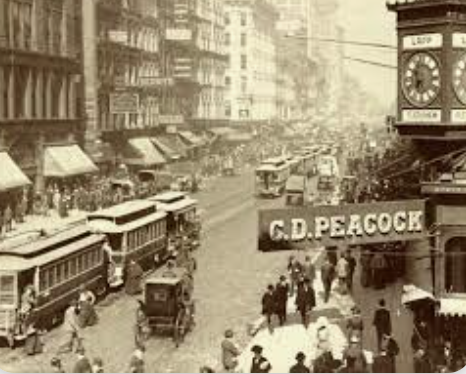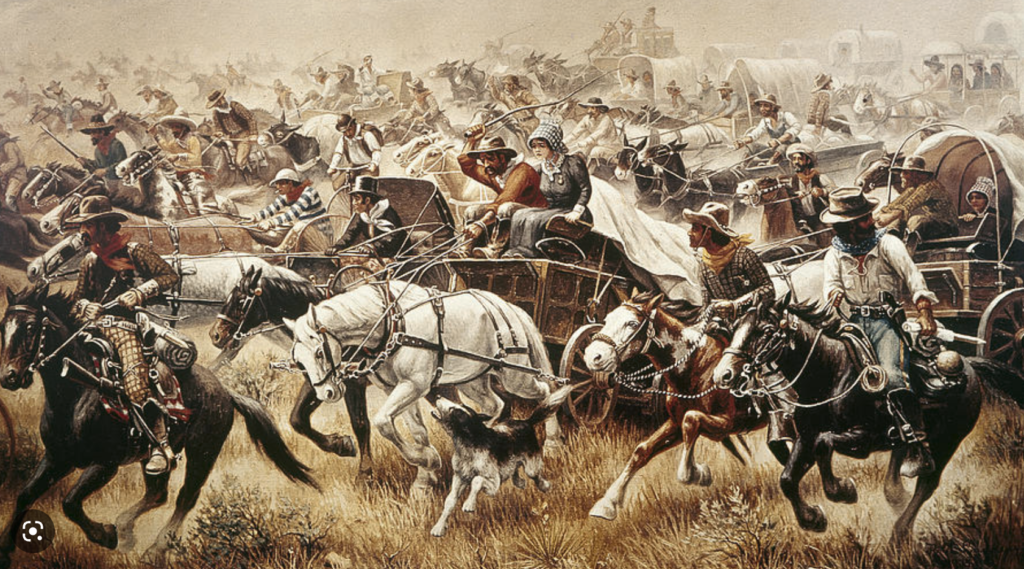The 1890 census was a fascinating one in showing a transitory period for the United States.
It was the first one in which more than one city had a population of more than a million people. New York City had topped 1 million in the 1880 census, and Chicago and Philadelphia joined it in 1890. There was only one other city with more than half a million people and it no longer exists.
Huh?
No, there was no large city that vanished from the earth. The 806,343 residents of Brooklyn, New York, became part of New York City in 1898. As of 2020, the borough of Brooklyn has more than 2.7 million residents and would be the third largest city in America.

Of course NYC is first, but the one now second ranked 57th in 1890, just behind Evansville, Ind., and just ahead of Des Moines, Iowa. Yes, Los Angeles had a population of 50,395 and was tiny compared to California’s largest city. San Francisco had 298,997 people and ranked eighth in the country, barely ahead of Cincinnati, Ohio.
Huh?
Only two Texas cities ranked in the top 100, Dallas was 77th and San Antonio was 81st. Even more bizarre, there were no Florida cities in the top 100. In fact, Florida ranked 32nd of the 44 states in population, just ahead of New Hampshire and just behind Colorado.
In fact, four of the 10 largest cities in the U.S. in 2023 were not even in the top 100 in 1890 — Houston (4th), Phoenix (5th), San Diego (8th) and San Jose (10th). Apparently, at least in 1890, no one knew the way to San Jose.
Why was Florida so underdeveloped? Tropical diseases had something to do with it, and the fact that air conditioning had yet to be invented didn’t help either.

The four largest states could have been adjacent to each other save for Indiana being in the way. New York had 6 million, Pennsylvania 5.25 million, Illinois 3.8 million and Ohio 3.7. Present-day giant California was 22nd, with 76,000 fewer people than Mississippi.
Huh?
It really was a very different country then. Other states with more people than the Golden State included Alabama, Kansas and Iowa. The Hawkeye State actually was 10th largest back then, without even counting the cows.
Three of the 44 states — Idaho, Wyoming and Nevada — had fewer than 100,000 people each. Two territories that weren’t yet states — Oklahoma and Utah — had populations larger than the five smallest states. One minor oddity is that the 44 states and five territories came up one short of today’s 50 states.
That’s because in 1890, Hawaii was an independent nation. It was annexed as a U.S. territory in 1898 and became a state in 1959.
An interesting fact that isn’t about numbers was that census findings announced that the frontier region no longer existed and that the government would no longer track westward migration. Of course, California had a population of just over 1.2 million than and now has nearly 40 million people.
The 1890 census was the last one before my four grandparents were born. Paul and Florence Kindinger and Charles and Blanche Whitcomb all started their lives in the 1890s.
Charles and Blanche, the parents of my birth father, both died before I was born. Paul and Florence lived long lives and were part of my life till I reached early middle age.
My two grandfathers both fought in France in World War I. The Whitcombs were of English ancestry and came to America in the mid 17th century, while the Kindingers were German and emigrated more than 200 years later.
America has changed so much in the 133 years since 1890, although there are some ways in which we are reverting back. In 1900, an annual income of about $2,000 was what a family of four needed to have a decent life. Sadly, only about 30 percent of American families were at that level or above.
Meanwhile, no income tax and no estate tax left the folks who had money living in high cotton.
What indignities of modern life didn’t exist in 1890.
Television, for one.
Radio.
Movie theaters.
In fact, the entire noise level of life was much lower then than now.
As for a lack of money, there were plenty of times hard work and good luck could overcome it. Take Oklahoma for example. Under the Homestead Act of 1862, people willing to live on parcels of land for five years and improve it could earn title to 160-acre parcels. Land races in 1885, ’89 and ’93 were huge spectacles.

You didn’t even have to be a citizen, as long as you showed up at the starting point and outraced people to the land you wanted to claim.
It really was a hell of a country, plenty big enough for 62 million people and their dreams.
